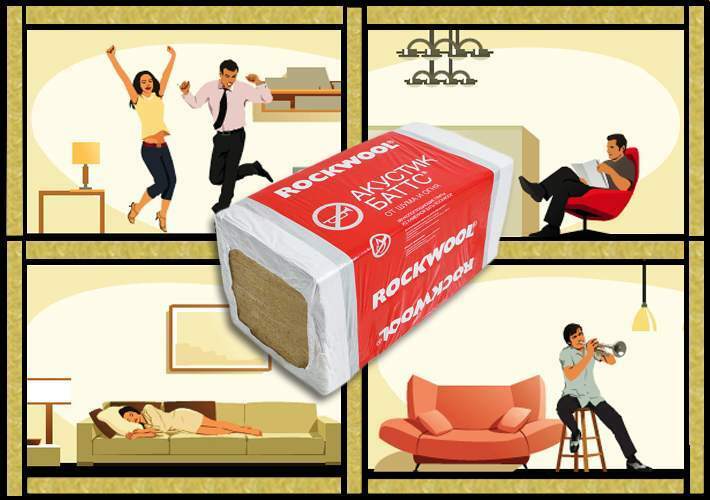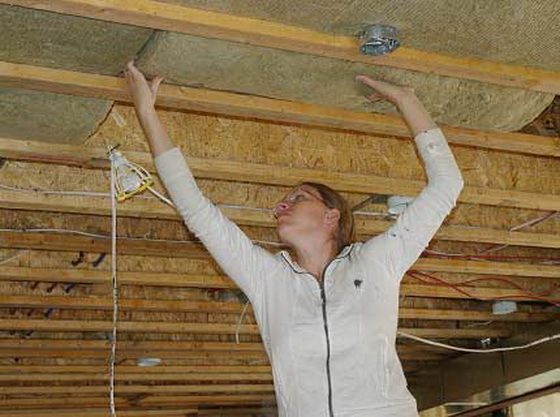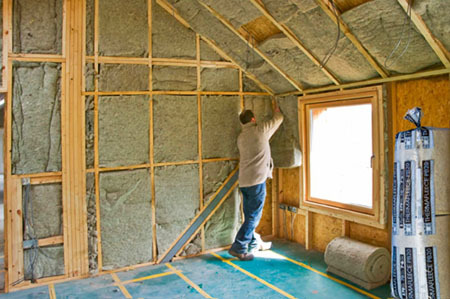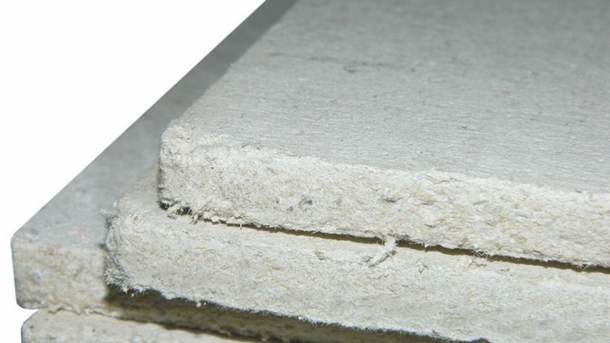Heat-insulating wool is the leading material for warming rooms. High performance, natural composition, long service life and ease of installation put mineral wool in the first place when compared with other insulation solutions. Let's look at the main criteria for choosing this material.
Kinds
Insulation can be of different composition and density, but one thing unites it - a fibrous structure and friability, hence the name "cotton wool".

Raw materials for production are broken glass, rock (basalt, gabbro), slag, quartz.
Depending on the filler, the material is divided into types:
- stone - thermal conductivity from 0.048 to 0.077 W / m • K,
- basalt - thermal conductivity from 0.035 to 0.039 W / m • K,
- slag - thermal conductivity 0.046-0.048 W / m • K,
- glass is the cheapest material, thermal conductivity is from 0.03 to 0.052 W/m•K.
Glass and slag have significant drawbacks - this is brittleness, the need to use personal protective equipment when working with them, and significant limitations in use. Therefore, they are now mainly used
stone wool and basalt wool. About them further and will be discussed.Properties
The main properties of mineral wool include:
- flexibility, ease and ease of installation. There are no restrictions on the geometry, shape and tightness of the seams.
- fire resistance.
- natural composition, no release of toxic or harmful substances during operation;
- good vapor permeability, no condensation;
- resistance to fungus, mold, rodents;
- soundproofing;
- hygroscopicity is a minus, so the material must be protected from moisture.
Release form
A variety of mineral wool formats allows you to use it almost everywhere:
- Plates have a high density and convenient dimensions. They are used for insulation of facades and loaded structures, even under a screed.
- Rolls and stitched mats. Are intended for isolation of walls, overlappings, subroofing designs.
- Shells and hollow cylinders are a convenient and practical insulation for pipes of household communications.
Thermal insulation wool grades
The classification is based on the density of the insulation. There are 4 brands:
- P-75;
- P-125, P-150;
- PZh-175;
- PPZH-200.
P-75 - has a density of 75 kg / m3 - these are light and soft plates. They are mounted on horizontal surfaces (without load), they can be wrapped around pipes and ventilation ducts, they are suitable for attics, roofs, ceilings and floors along logs.

P-125 and P-150 with a density of 125 and 150 kg / m3 has high strength, sufficient flexibility and sound insulation bonus. The material does not settle like P-75, therefore it is suitable for walls, partitions, facades and balconies.
PZh-175, PZh-200 - refer to rigid plates, the density corresponds to 175 and 200 kg / m3. Can be laid under screeds. PZH-200 additionally meets all the necessary fire safety requirements and can be used in warehouses, industrial and commercial premises.
Pros and cons of stone wool
Pros:
- plates can be mounted on all materials used in modern construction;
- chemical resistance;
- performance characteristics are maintained up to 50 years;
- almost complete absence of shrinkage;
- fire resistance and fire safety;
- simplicity and ease of processing;
- optimal coefficient of thermal insulation;
- vapor permeability;
- cheapness.

Minuses:
- the need for waterproofing insulation;
- the release of formaldehyde during strong heating (in ordinary life it is completely safe);
- when working with plates, it is still recommended to work in masks and goggles.
How to choose
We recommend purchasing products from trusted brands, such as Rockwool and TechnoNIKOL, with an assortment mineral wool can be found on link.
You do not have to understand the density, length of the fibers, their thickness and the raw materials from which the blocks are made. The manufacturer has already done everything for you and has released product lines for the insulation of facades, ceilings, roofs and other things. All the necessary information is in the description and on the packaging. The installation process is also described in detail.


